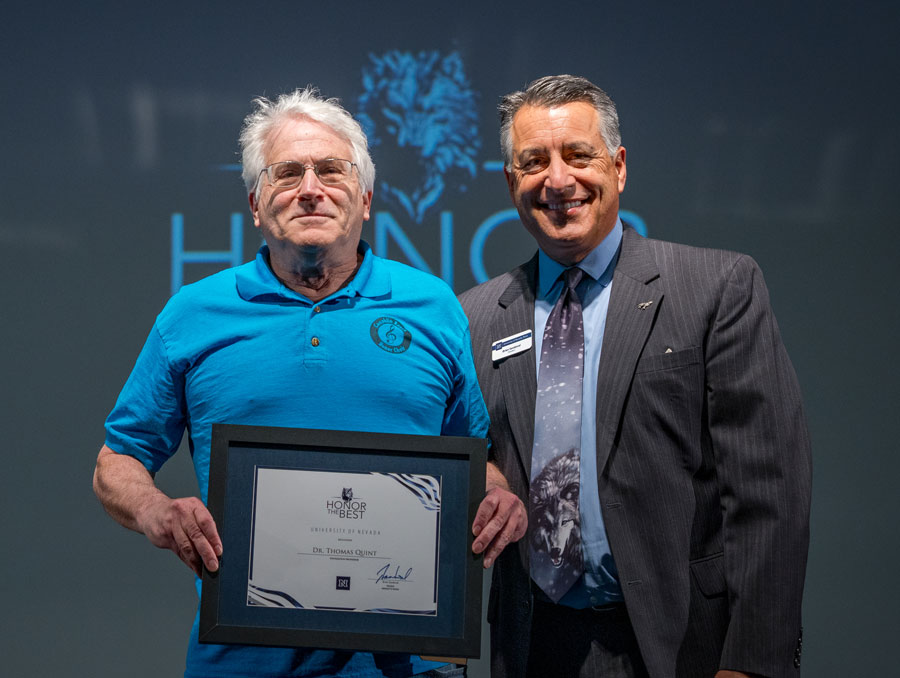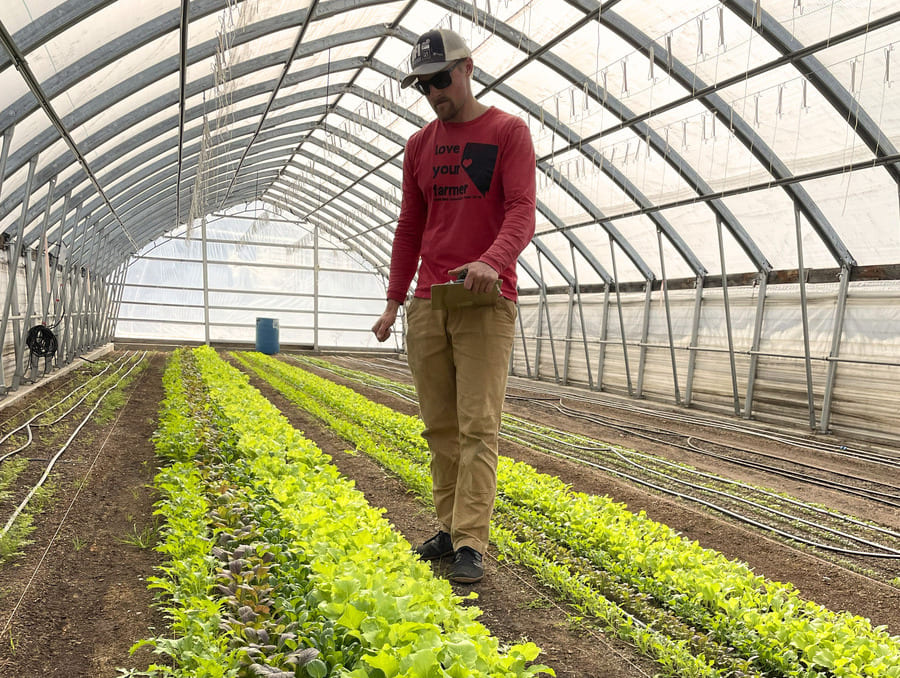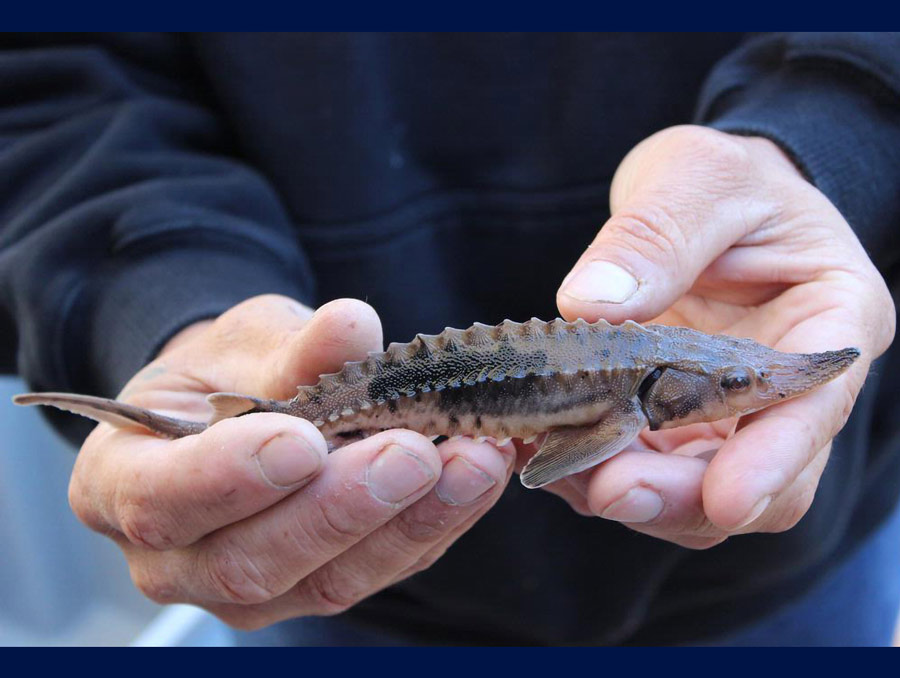When Foundation Professor M. “Saiid” Saiidi arrived on campus in 1979, as so many times in his life, he looked beyond what was and considered what might be. Then, he rolled up his sleeves and got to work making his vision a reality.
“Nevada is a pioneer land, and I wanted to be part of history here. I wanted to make this place stand out,” he said. “As an assistant professor, I had a lot of freedom and a lot of support, from the department chair up. It was very empowering.”
Forty-one years later, as he retires, Professor Saiidi has helped bring the Department of Civil and Environmental Engineering to the world stage. Through 148 grants totaling $30 million, more than 500 publications, and the mentorship of 157 students, he has, indeed, made Nevada stand out. His research in novel materials and building techniques have advanced earthquake-tolerant bridge design and construction. And his ideas have moved from the University’s Earthquake Engineering Laboratory, where he proved his concepts, to a bridge in Seattle that opened to traffic last February. Upon its completion, the bridge was recognized by the ASCE as a Top 5 project of the year.
“Engineers are problem solvers,” Saiidi said when asked about the bridge. “We want to do research that is on the cutting edge but that has practical application. It is exciting to see research that can be used. With the Seattle bridge, I spent twenty years doing research on nickel-titanium materials that no one had looked at in this field. With the opening of the bridge, we took an idea from A to Z.”
On the strength of the research performed by Saiidi and his colleagues, the University of Nevada, Reno’s program on bridge earthquake engineering is considered one of the best in the world. Saiidi’s contribution to this reputation is undeniable, but when he speaks about the growth of the department, he takes a step back.
“When you want to develop the reputation of your program, there are four factors you have to get right: Faculty, facilities, institutional support and high-quality students,” he said. “Little by little, over the years, we worked on all four of these. We brought in top-notch people and helped them succeed. As I retire, I see the momentum continuing and accelerating. It is very fulfilling.”
The M. Saiid & Sohila Saiidi Endowed Professorship
To ensure the faculty and students in the Department of Civil and Environmental Engineering continue to excel, Saiidi and his wife, Sohila, have established the M. Saiid & Sohila Saiidi Endowed Professorship.
“The first element of having a reputable program is the team of faculty,” Saiidi said. “Our institution is mature enough to need endowed professorships so that we can attract top faculty who are well established. Our donation will help attract and retain faculty members who share our wish to move the University toward being one of the best schools serving Nevada and the nation.”
That Professor Saiidi’s parting gift to the University is designed to support mentorship is fitting. Perhaps even more than when he speaks about his own research, when Saiidi speaks about the accomplishments of his students, the pride he feels is clear.
“Our students are the cream of the crop. They are professionals. I have a lot of respect for them,” he said. “We have so much intellectual exchange, and inevitably, things other than research come up in our discussions. They are almost like my children, and I cherish the connections I have with them.”
As a tangible manifestation of the connection he has with his students, in 2012, Saiidi began presenting each of his Ph.D. and M.S. students, past and present, with an original painting he made for each. For his Ph.D. students, the scenes and places represented are from his native Iran, while his M.S. students receive paintings depicting the United States.
The first to receive a painting from Saiidi was Yang Jiang. Saiidi’s first Ph.D. student, Jiang is, for Saiidi, an exemplar of what he finds crucial in successful students: a can-do attitude.
“It is so important for students to believe that they are able to do what they want and to do what is right professionally,” he said. “They must tell themselves, ‘I am able to do it. I am going to do what it takes to do it.’ You have to have a positive attitude about yourself. A can-do attitude. That is what is required to succeed. I have seen it happen throughout my career.”
When Jiang came to study with Saiidi, he had little experience working with computers. During his undergraduate career in China, all his computer programming was done on blackboards, in the abstract, a fact that Saiidi didn’t know until he asked Jiang to write a program in the computer lab.
“I took him to the computer lab and walked him through how to do a simple program,” Saiidi said. “That Yang had no hands-on experience wasn’t going to stop me from teaching him. In time, his hard work gave him the confidence he needed to excel. Four years later, he got his Ph.D. and got a job for a company in Seattle. Six months later, his boss told me that I had sent him a jewel.”
Jiang now serves as the Senior Technical Advisor for bridges and tunnels at HNTB, the same company where he began his career 28 years ago.
“Even though his direct mentorship and financial support for those five years happened a long time ago, I still experience so much gratitude for what Saiidi has selflessly given me and for what he has taught me,” Jiang said. “I am doing my best to carry on his high standards through my work and by providing mentorship to many young engineers.”
As Professor Saiidi retires, we can point to the bridge in Seattle as a lasting monument to his innovative and distinguished career, but he is just as quick to point to the legacy he leaves in students like Jiang.












